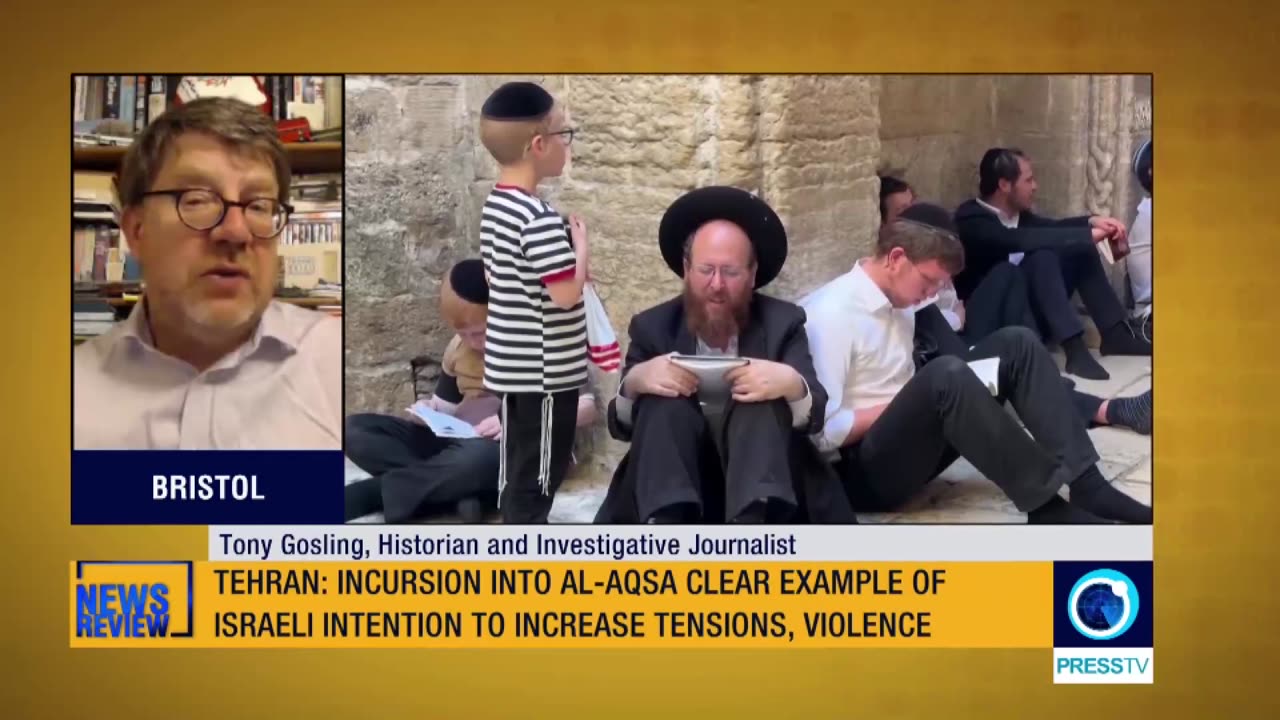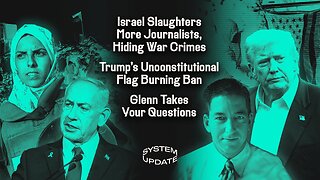Premium Only Content

If worshippers unarmed, Jewish prayers should be allowed in Al-Aqsa to aid Abrahamic reconciliation
PressTV Latest Israeli incursion into the al-Aqsa mosque compound has drawn reactions from the world countries
The latest Israeli incursion into the al-Aqsa mosque compound has drawn reactions from the world countries including some of Israel’s closest allies.
Explained: Why Jewish worship at Al-Aqsa Mosque is controversial
https://www.middleeasteye.net/news/aqsa-mosque-jewish-worship-controversial-why-explained
Praying at the Jerusalem holy site is problematic for Muslims and many Jews. Here’s why
Incursions by ultranationalist Israeli settlers at occupied East Jerusalem's Al-Aqsa Mosque has become an increasingly common sight in recent years, regularly provoking Palestinians and Muslims worldwide.
The Al-Aqsa Mosque complex, also known as al-Haram al-Sharif, lies on a raised plateau that Jews refer to as the Temple Mount.
Jewish prayer in the mosque's courtyards has been banned for centuries, including by a succession of Israeli governments, and is highly controversial among Muslims and religious Jews alike.
Middle East Eye takes a look at why Jewish prayer at this holy site is so sensitive:
Why is the site important?
For religious Jews, the Temple Mount is the holiest site in Judaism. It is believed to be the site of two temples that were once the centre of the Jewish kingdoms that existed in ancient times, according to both scripture and archaeological studies.
The only remaining part of the Second Temple - begun by Herod the Great and destroyed by the Romans in 70 CE in retaliation for a Jewish rebellion - is the Western Wall, which is the holiest site for Jewish prayer in the city.
Atop the hill is the vast Al-Aqsa Mosque, a complex of courtyards, prayer halls and shrines, including the golden-roofed Dome of the Rock. The mosque is one of the holiest sites in Islam.
The Ottoman Empire captured Jerusalem in 1517 and would control the city for the next 400 years, before the British seized the city during World War One.
The Ottoman rulers were at pains to prevent sectarian clashes in the city - not just between Jews and Muslims, but also among various Christian sects claiming authority over the holy sites, and issued a number of edicts setting out how control of the city would be divided.
In 1757, Sultan Osman III issued a decree that established what became known as the "Status Quo". Apart from attempting to prevent inter-communal fighting among Christians over sites like the Church of the Holy Sepulchre, the Status Quo also re-asserted a ban on non-Muslims entering Al-Aqsa and the right for Jews to use the Western Wall for prayer.
The Chief Rabbinate of Jerusalem has also, since 1921, officially banned Jews from entering the Temple Mount. The edict states that entry to the site is forbidden unless you are "ritually pure", which is believed impossible under modern conditions.
According to the Rabbinate, the Temple Mount is the site of the Holy of Holies, the area on Earth where God's presence appeared. Therefore, setting foot on the site risks desecration.
According to the Jerusalem Centre for Public Affairs: "In banning access to the Temple Mount, the chief rabbis were following Maimonides' view that the Shechinah (Divine Presence) is still present at the spot of the Temple.
"Entry to it is forbidden and punishable with kareth (death by heavenly decree), given that Jews are in a state of ritual uncleanliness today in the absence of a red heifer, the ashes of which are required for the purifying process."
The majority of Orthodox Jews have respected the Rabbinate's ban and, though there have been numerous exceptions over the centuries, for the most part, Jewish prayer has been isolated to the Western Wall.
-
 LIVE
LIVE
TimcastIRL
2 hours agoTrump Orders Specialized National Guard Units To Combat Crime In Cities, Dems Furious | Timcast IRL
26,060 watching -
 LIVE
LIVE
SpartakusLIVE
3 hours ago#1 Rocket CHAMPION of Verdansk wields UNSTOPPABLE new META
322 watching -
 LIVE
LIVE
Barry Cunningham
3 hours agoPRESIDENT TRUMP MADE TODAY A VERY BAD DAY TO BE A DEMOCRAT!
8,775 watching -
 LIVE
LIVE
Flyover Conservatives
20 hours agoFrom Cool to Cringe: How Democrats Lost America’s Ear | FOC Show
224 watching -
 8:19
8:19
MattMorseTV
7 hours ago $0.90 earnedTrump is ACTUALLY DOING IT.
3.82K19 -
 LIVE
LIVE
ZWOGs
9 hours ago🔴LIVE IN 1440p! - Tarkov w/ Casey & crgoodw1n, Kingdom Come Deliverance, & More - Come Hang Out!
58 watching -
 LIVE
LIVE
We Like Shooting
13 hours agoWe Like Shooting 625 (Gun Podcast)
113 watching -
 1:45:02
1:45:02
Glenn Greenwald
4 hours agoIsrael Slaughters More Journalists, Hiding War Crimes; Trump's Unconstitutional Flag Burning Ban; Glenn Takes Your Questions | SYSTEM UPDATE #504
87.9K85 -
 1:29:31
1:29:31
Killerperk
1 hour agoRoad to BF6. Come hang out #regiment #bf6
1.35K -
 LIVE
LIVE
Jokeuhl Gaming and Chat
2 hours agoDARKTIDE - Warhammer 40k w/ Nubes Bloobs and AoA
40 watching